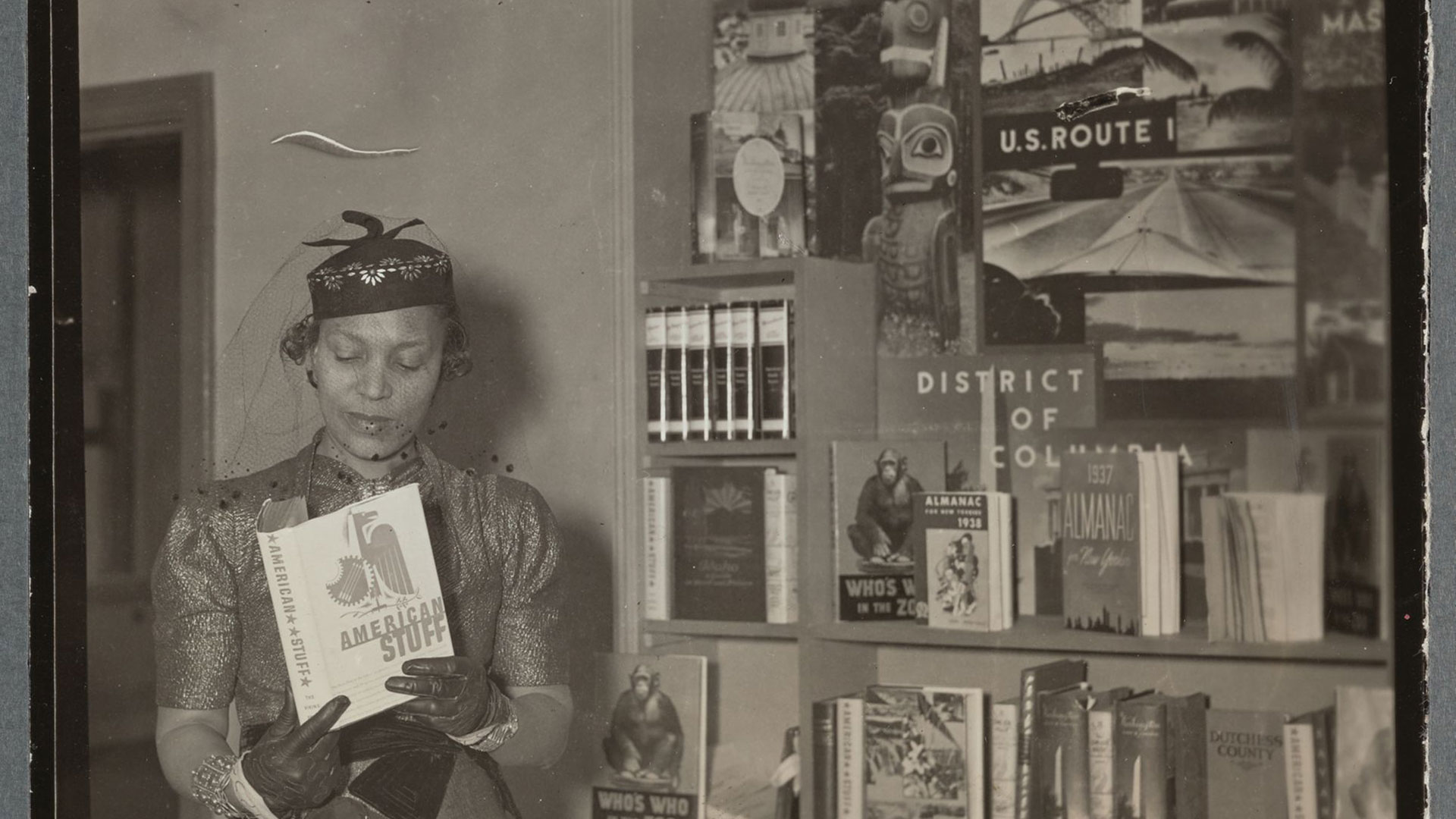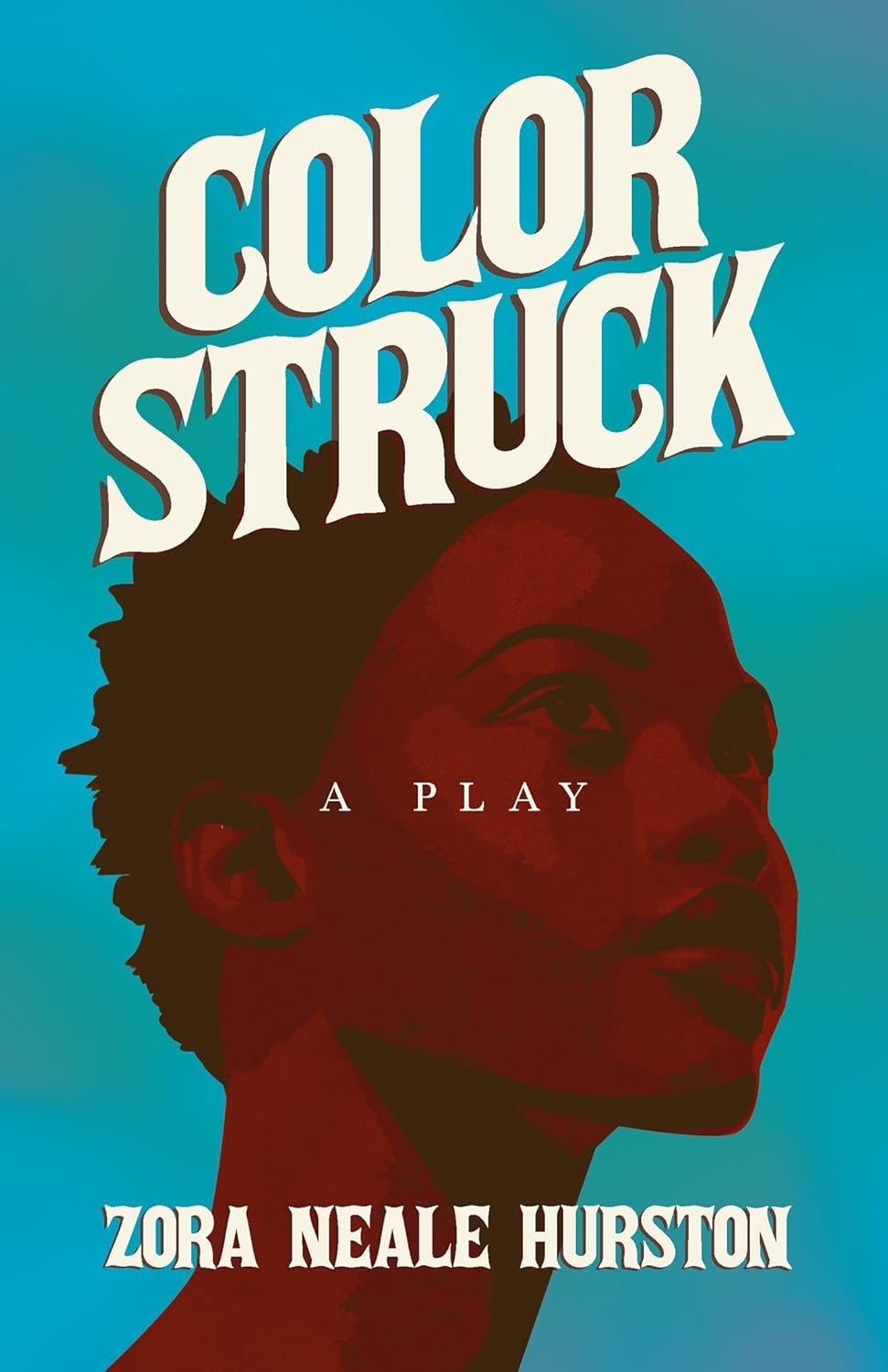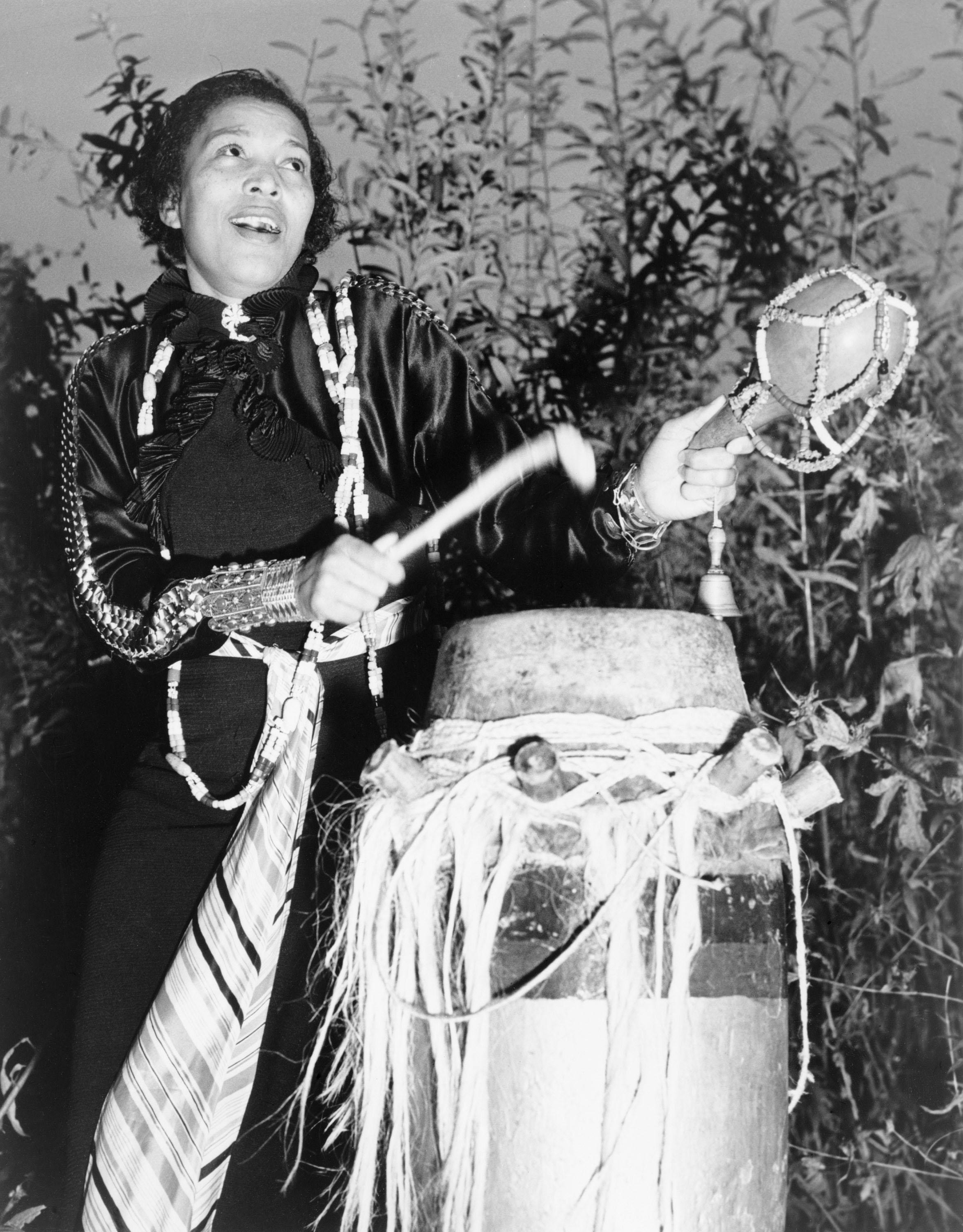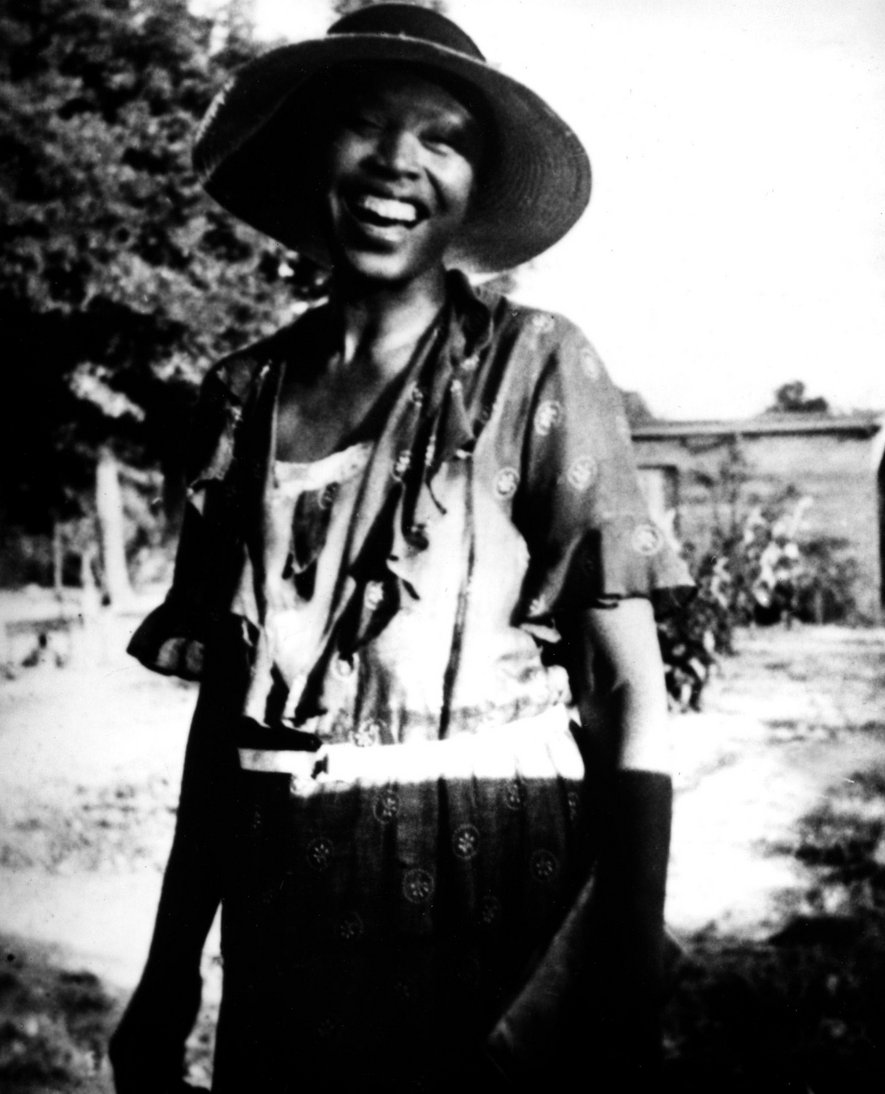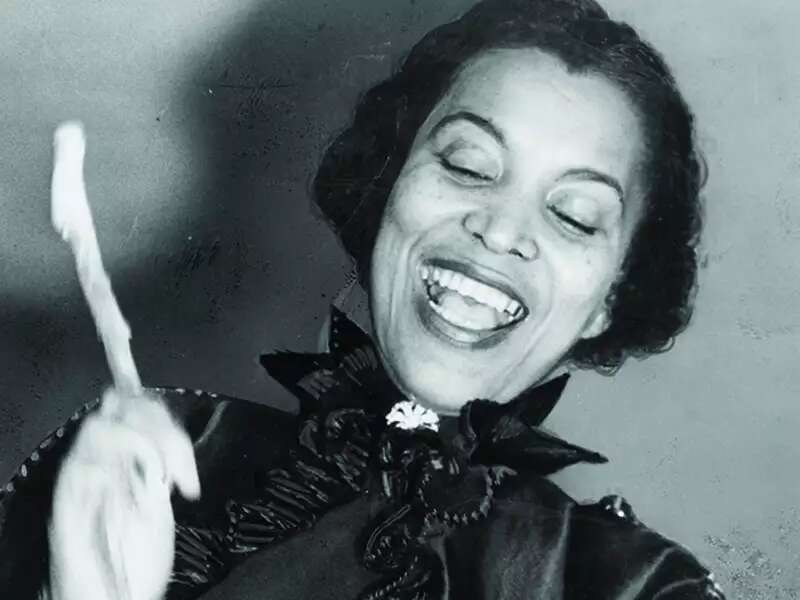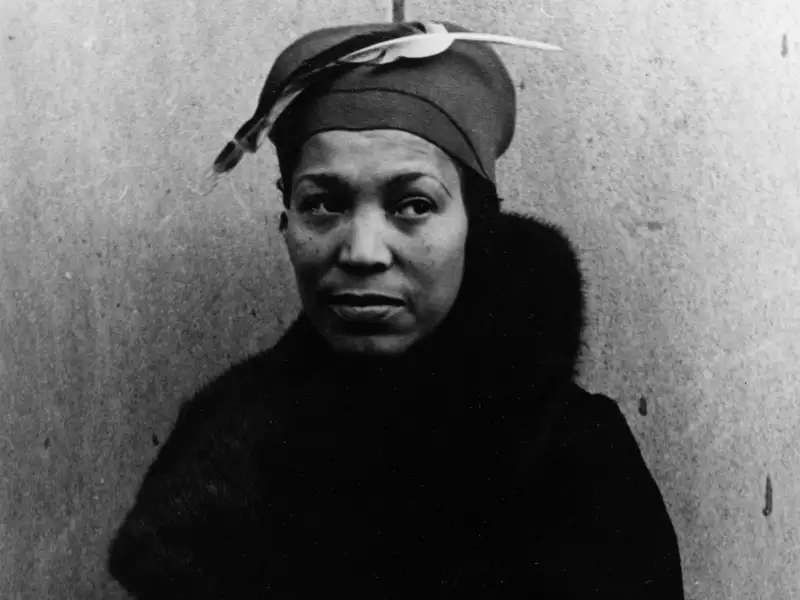When Zora Neale Hurston ’28 stepped onto Barnard’s campus in 1925, she did so as its only Black scholar. She had arrived in New York with, she wrote, “$1.50, no job, no friends, and a lot of hope.”
That year, she transferred from Howard University and enrolled at Barnard. In her “Record of Freshman Interest” for the College, she wrote that she planned to earn some of her college expenses by “perhaps [selling] a manuscript or two.”
A century later, hundreds more Barnard students have been inspired by Hurston’s legacy and grit and continue to carry her torch with them throughout their lives and careers. Her influence also extends to staff and faculty who have used her novels, essays, and plays to educate the next generation of scholars.
In January, the College hosted the Zora Neale Hurston Summit, organized and led by the Zora Neale Hurston Trust. The two-day event was a celebration of Hurston’s centennial anniversary and her ongoing cultural impact — one that was keenly observed in a 1946 Barnard Magazine profile describing her as “one of Barnard’s most distinguished alumnae.”
To honor Hurston’s milestone anniversary and her legacy, Barnard Magazine asked members of the community — writers, artists, scholars, and more — to share how the writer, anthropologist, and American folklorist has informed and inspired them. The reflections below are part of the upcoming Winter issue of Barnard Magazine’s larger feature highlighting Hurston’s influence.
Tomisin Fasosin ’25, urban studies major with a concentration in Africana studies. (This is an excerpt from a speech given at B.O.S.S.’s annual Family Dinner on December 8, 2024.)
Zora has found me in many moments during my time at Barnard. I find comfort in the fact that just 100 years ago, there was a woman full of wit and charm that was going through exactly what I am [going through] now.
My first introduction to Zora was reading How It Feels to Be Colored Me in Dr. [Maleda] B[elilgne]’s Queer Harlem course. It was the first time I had encountered writings from a Black Barnard student, specifically about how it feels to go here. To summarize her time at Barnard, Zora wrote that “among the thousand white persons, I am a dark rock surged upon, and overswept, but through it all, I remain myself. When covered by the waters, I am; and the ebb but reveals me again.”
Zora’s words fashioned a world around her. A world where the Black-centric experiences of the South were accurately depicted. A world where the front porch was a stage around which everything revolved. A world where Black stories were lauded as the true depictions of humanity.
What Zora does with words is what I like to believe I do in my creative life: fashioning a distinctly Black world around me. Style is the lens through which I see my world. As I look through my closet each morning, I think about the colors and silhouettes I want to experiment with. When I cut and sew clippings together to collage, I am styling art. When I cook, I am digging through the archives of family recipes and tailoring a dish that is culturally inspired.
It is being intentional about the ways I’ve fashioned my experiences as a Black Barnard student that has sustained me. A defining part of my time here is the moment Zora found me. I encourage all Black Barnard students to pay attention to Zora. As our first, I believe that at some pivotal moment, she will find each and every one of us.
Hannah Isabelle Holness ’26, English and Africana studies major who incorporated Hurston’s play Color Struck into their Laidlaw 2023 research
Zora Neale Hurston has been an instrumental part of my academic career and gaining confidence in my Black identity. Her writing style breathes essence into ink, and within those pages live the facets of Black life that don’t have the privilege of resting on bookstore displays. Hurston penned the multifacetedness of the Black experience in ways that spoke to me and made me feel welcome in Black spaces at Barnard. Her play Color Struck personally fueled me to further my endeavors in Black multiracial studies and strive toward a more unified Black community. Not only did the play emphasize the importance of community strength, especially among Black women, but it also acknowledged the struggles in finding belonging and avoiding fetishization as multiracial women.
This motivated me to use Hurston as a framework for analyzing the Black multiracial experience within the community as a Laidlaw Scholar. In Hurston’s assertion that Black multiracial women were still Black women, I found reassurance and belonging in spaces I formerly felt excluded from as a Black and Asian woman. Most importantly, Hurston’s writings have fostered a loving and empowering space for Black women who proudly take up her mantle and are the core of the Black community at Barnard. My high school yearbook quote was from Hurston: “I have the nerve to walk my own way, however hard, in my search for reality, rather than climb upon the rattling wagon of wistful illusions,” keeping it as a premonition for my success within Barnard’s gates and beyond.
Quincy Scott Jones, Term Associate, English, First-Year Foundation
I’m not a scholar of Zora Neale Hurston, but in 2015, I wrote a poem about her because Zora Neale Hurston brought zombies to America …
… because Zora Neale Hurston wore a big hat, brightly colored scarves, and smoked cigarettes in public (though the Surgeon General now warns against that).
… because Zora Neale Hurston wrote on the intersections of race and class, slavery and sexuality, intellectualism and loneliness, humor and the sad state of our world.
Once Zora Neale Hurston drove Langston Hughes from New Orleans to New York City. He charmed her the entire way and she charmed him right back. And if that story isn’t true, it should be.
She brought the dialect of the South to the World. She brought the knowledge of the World to America.
Zora Neale Hurston died penniless and was buried in an unmarked grave.
Did I mention she went to Barnard?
In 2021, when I started teaching at Barnard, I wanted to ignite in my students the same interdisciplinary, society-challenging fire that I always read in Zora Neale Hurston. Turns out, these students did not need much igniting. The kids are curious, creative, ready to change the world. “Barnard Bold” is not just alliteration.
Even better, these students care for their fellow artists and scholars. It’s an honor to teach in a community that seeks to make sure none of its future and fellow alumnae ever end up in an unmarked grave.
But no bringing zombies to class. I draw the line there.
Provost Rebecca L. Walkowitz
Zora Neale Hurston is a key figure in the history of 20th-century U.S. literature and culture, especially African American literature, the literature of women’s experience, and literature by women writers. Celebrating her legacy allows us to recover the history of Black students at Barnard, highlight the contributions of Black women writers and artists to the history and future of the Harlem Renaissance, and elevate Barnard’s ongoing commitment to the creative arts.
